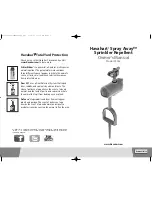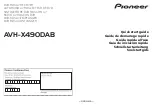
S80 Version 4.92
November 2014
Page 39 of 61
and then setting the TE: to 0%. In still air accelerate to approximately 160 km/h and slowly
reduce the speed. Observe the vario indicator. If the static source is good the vario should
immediately start to move to show a climb. If the needle firstly shows increased sink and
then moves to a climb, the static source of the glider is unsuitable and there is no way to
provide successful TE compensation electronically. The use of a dedicated and accurate fin-
mounted pitot/static source such as a Prandtl tube might help.
5.5.9.2
SC switch
The LXNAV S80 has an input for an external
speed command switch.
Using the external
switch it is possible to switch between SC and Vario manually. Setting the
SC switch
to
ON
means that closing the switch will cause the instrument to enter SC mode and setting SC
switch to
OFF
means that closing the switch will select Vario mode. There is a third option
by setting SC INPUT to
TASTER
and connecting a push button to the input; each key press
will toggle between SC and Vario (mandatory setting for LX Remote).
There is another input called VARIO PRIORITY. When this input is activated by
grounding the appropriate wire the unit will change over to Vario immediately.
This input wire is set open (not grounded) as a factory default on delivery.
5.5.9.3
Digital Input 1 and 2
The LXNAV S80 has two external digital inputs which can be set to indicate gear,
airbrakes and water open or closed.
Input pins are available on rear DB15 connector, but they are not wired.
5.5.10
Indicator setup
Vario Needle: Can be set to Relative, Netto, Speed to Fly or Vario
SC needle: Can be set to Relative, Netto, Speed to Fly or Vario
Yellow Bar: Can be set to G-meter, Min/Max vario or no bar
Red Diamond: Can be set to G-meter, Netto, Average vario, or No diamond
MacCready: Can be enabled or disabled
Thermal: can be enabled or disabled
















































